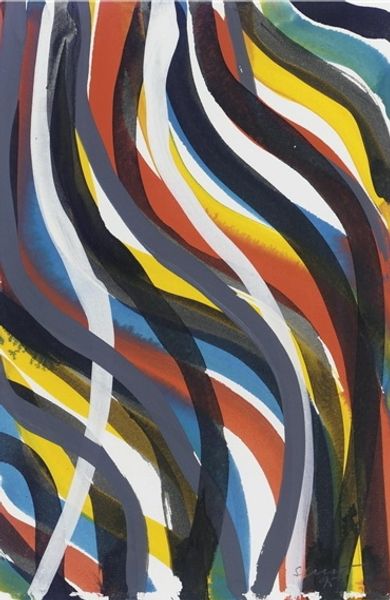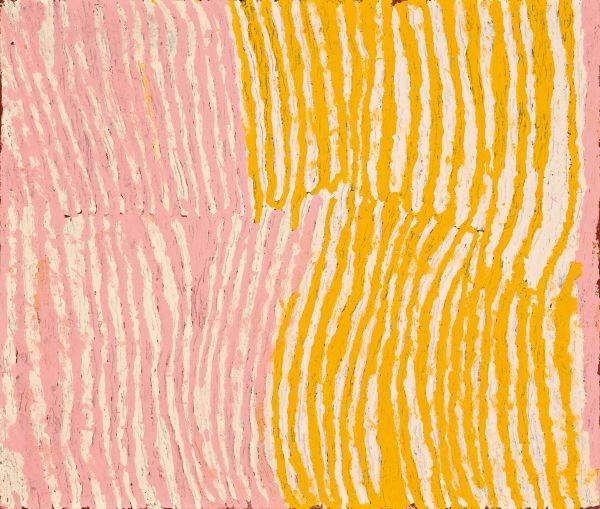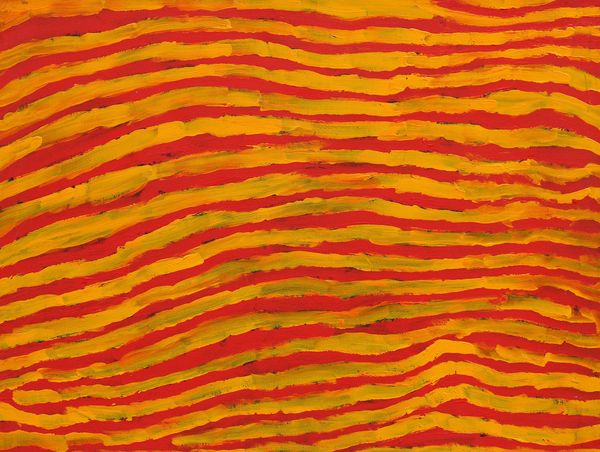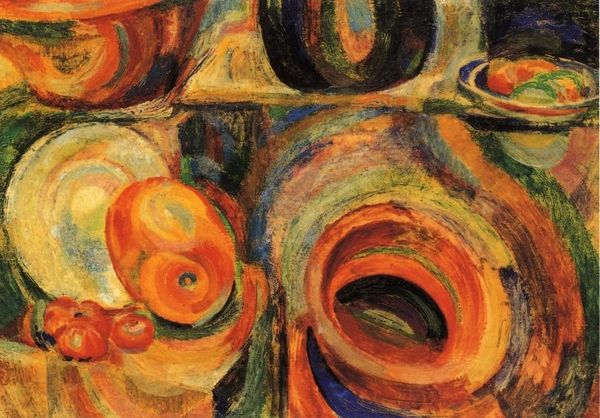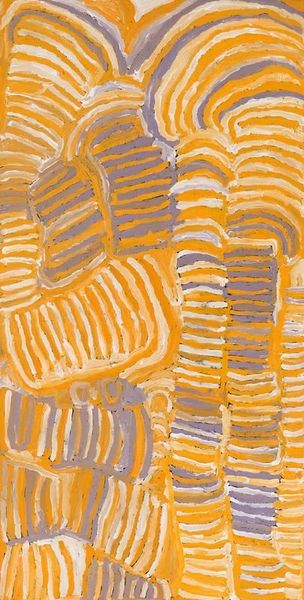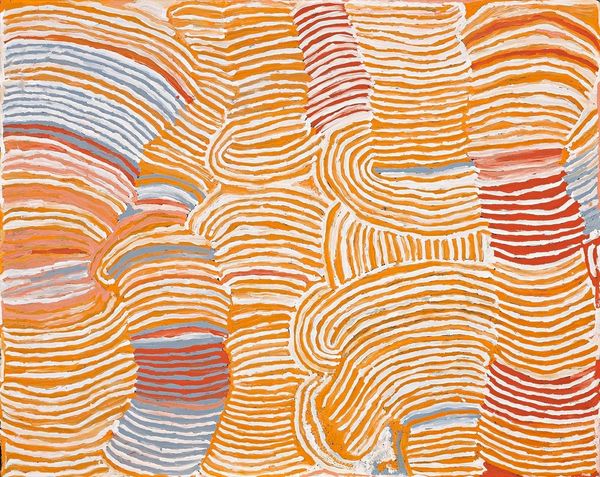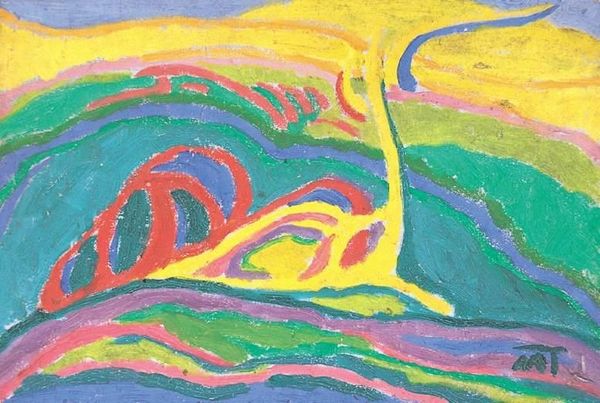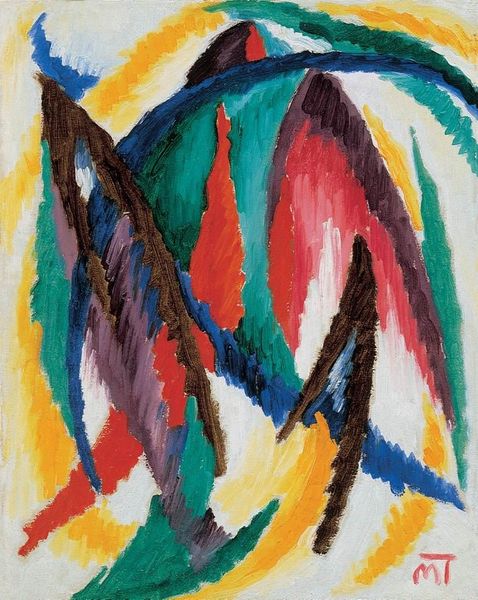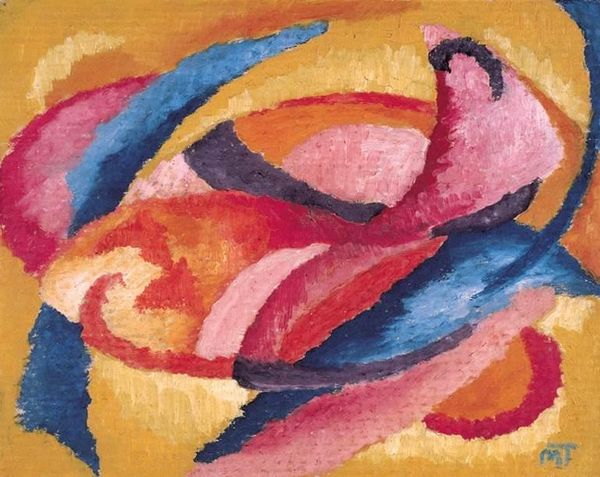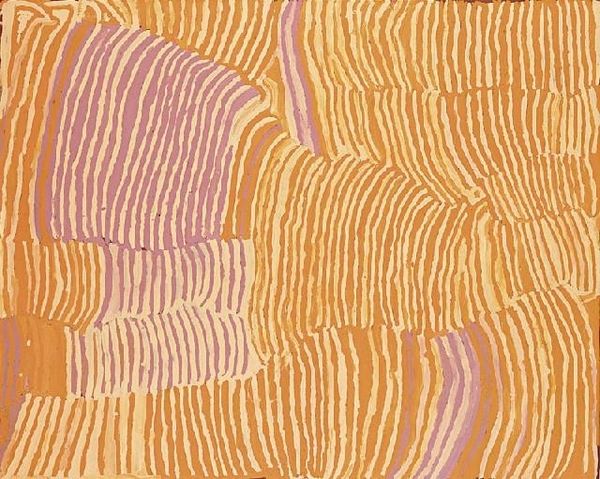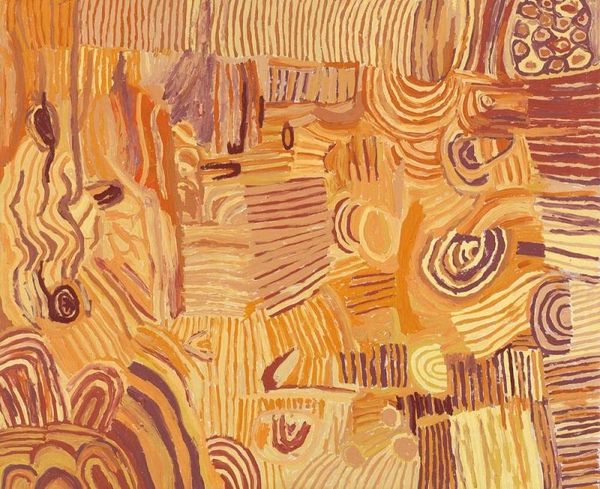
painting
#
organic
#
abstract painting
#
painting
#
form
#
abstract pattern
#
organic pattern
#
abstraction
#
line
Copyright: Emily Kame Kngwarreye,Fair Use
Curator: Emily Kame Kngwarreye's "Alhalkerre," created in 1992, really grabs you with its fiery hues, doesn’t it? Editor: Fiery is definitely the word! The intense reds and oranges make me feel like I'm looking at a sunset over a desert. It’s raw, almost visceral, like the earth’s heartbeat made visible. Curator: Visible indeed. Kngwarreye was an Anmatyerre artist, and her paintings often reflected her deep connection to the land. What we're seeing here, rendered in acrylic, is her interpretation of Alhalkerre, which represents the yam plant, an important food source in her culture. Editor: So, the material itself—acrylic—already brings in a dialogue between tradition and modernity, doesn't it? From natural pigments to something so manufactured. How did that impact her process, do you think? Did it free her up or constrain her? Curator: That's such a good question! I imagine the vibrancy of acrylics gave her a new visual vocabulary, but knowing Kngwarreye, it’s about the *feeling* of the land. It doesn't seem like she would be concerned with the "prestige" or purity of natural materials as much as the best tools for relaying the experience of place. These radiating lines are the energy of the yam, and acrylics certainly allow for a very vivid portrayal. Editor: True, true, look how the lines vibrate! But I am curious, from a craft perspective, how she laid down the paint. Is it dots, strokes? What kind of tools did she employ to create this kind of rhythmic movement? The means of production feel central. Curator: Close inspection reveals a combination of both dots and strokes. Her technique evolved quite a bit over her career; some works are incredibly detailed while others embrace a looser, more gestural style. This piece falls somewhere in between, I think. It's ordered yet free-flowing. To me, it speaks to the resilience and abundance of nature. Editor: Well, it certainly challenges that art-historical binary between "high art" and craft. Thanks to the choice of tools available at the time, this allows for a deeper connection to both place and history. What I'm left with is not just an image, but a trace of human and material collaboration. Curator: That’s wonderfully put. This artwork, at its core, offers us a beautiful example of how deeply intertwined nature, culture, and creation can be.
Comments
No comments
Be the first to comment and join the conversation on the ultimate creative platform.

